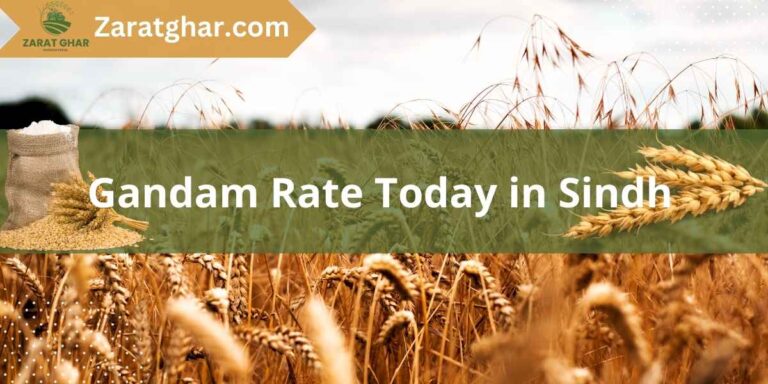Corn Rate Today in Pakistan June 2025
The Corn Rate Today in Pakistan ranges between Rs 2,600 to Rs 3,300 for a 40 KG sack. This equates to a price per 100 Kg ranging between Rs 6,500 to Rs 9,250.
Maize Rate Today in Pakistan per 40 kg
2025
| Month | Price |
|---|---|
| JANUARY | Rs. 2,500-3,000 |
| FEBRUARY | Rs. 2,500-3,200 |
| MARCH | Rs. 2,600-3,300 |
| APRIL | Rs. 2,600-3,300 |
| MAY | Rs. 2,600-3,300 |
| JUNE | Rs. 2,600-3,300 |
| JULY | |
| AUGUST | |
| SEPTEMBER | |
| OCTOBER | |
| NOVEMBER | |
| DECEMBER |
Read More
Papaya Price in Pakistan
Corn prices are dynamic and vary on a daily basis across all regions in Pakistan which places further complications on farmers. Now every farmer in Pakistan will be able to know about the corn price in Pakistan. Now Zarat Ghar will update regularly corn rate in Pakistan. The price of corn affects greatly both the farmers and the consumers. In this blog we will explain what the factors affect corn prices in Pakistan and their consequences.
Check today’s corn prices in Pakistan. It is essential for traders, buyers, and especially farmers to keep abreast with current corn prices for optimal decision making. The update on corn prices tells the impacts of trends on the farming economy in Pakistan. This article will provide you with the information regarding corn prices in Pakistan and its significance.
Maize Rate Today in Punjab per 40 KG
Currently in Punjab, the Maize Rate Today is anywhere between 2,600 to 3,700 Rupees. The below table provides two figures: one price pertains to average quality maize, however, the second price pertains to top quality maize. Corn prices are extremely favorable and are on the rise at the moment.
| District / City | Minimum Rate Per 40 KG | Maximum Rate Per 40 KG |
|---|---|---|
| Arifwala | 2,800 PKR | 3,200 PKR |
| Bahawalpur | 2,600 PKR | 3,100 PKR |
| Bahawalnagar | 2,600 PKR | 3,050 PKR |
| Burewala | 2,800 PKR | 3,100 PKR |
| Chichawatni | 2,500 PKR | 3,170 PKR |
| Chishtian | 2,500 PKR | 3,030 PKR |
| Chowk Azam | 2,630 PKR | 3,060 PKR |
| Dunyapur | 2,800 PKR | 3,020 PKR |
| Dera Ismail Khan | 2,620 PKR | 3,000 PKR |
| Faisalabad | 2,830 PKR | 3,050 PKR |
| Gojra | 2,700 PKR | 3,030 PKR |
| Gujrawala | 2,700 PKR | 3,130 PKR |
| Hasilpur | 2,800 PKR | 3,150 PKR |
| Jhung | 2,700 PKR | 3,040 PKR |
| Kehror Pacca | 2,800 PKR | 3,000 PKR |
| Khanewal | 2,500 PKR | 3,020 PKR |
| Mian Channu | 2,600 PKR | 3,150 PKR |
| Multan | 2,500 PKR | 3,050 PKR |
| Melsi | 2,600 PKR | 3,050 PKR |
| Okara | 2,900 PKR | 3,200 PKR |
| Pak Pattan | 2,600 PKR | 3,150 PKR |
| Pattoki | 2,300 PKR | 3,000 PKR |
| Rahim Yar Khan | 2,530 PKR | 3,120 PKR |
| Sahiwal | 2,600 PKR | 3,120 PKR |
| Sheikhupura | 2,530 PKR | 3,100 PKR |
| Toba Tek Singh | 2,700 PKR | 3,150 PKR |
| Vehari | 2,500 PKR | 3,230 PKR |
Corn Rate Today in KPK
The present cost of corn in KPK ranges from 2,700 to 3,050 Rs per 40 kg. Corn Price Today in KPK is higher than that in Punjab.
| District / City | Minimum Rate Per 40 KG | Maximum Rate Per 40 KG |
|---|---|---|
| Bunner | 2,700 PKR | 3,000 PKR |
| Peshawar | 2,700 PKR | 3,050 PKR |
Corn Rate Today in Sindh
The prevailing Corn Price Today in Sindh starts at 2,600 upto 2,950 Rs per 40 kg. The trend used to follow very low corn prices at the start of the season, but now it seems to be improving.
| District / City | Minimum Rate Per 40 KG | Maximum Rate Per 40 KG |
|---|---|---|
| Khairpur | 2,850 PKR | 2,970 PKR |
| Sukkur | 2,800 PKR | 2,950 PKR |
Key Takeaways
- Monitoring prices serves to appreciate changes and see emerging opportunities.
- Changes in the corn price today in Pakistan affect cropping selling prices and costs for farming.
- Different regions in the country have varying current corn prices due to differences in accessibility of resources needed.
- Local regulations and global policies shape the corn price update for 2024.
- Paying attention to the corn price today in Pakistan helps strategize better, especially for farmers and agricultural officials.
Overview of the Pakistani Corn Market
The agriculture of Pakistan depends on the market corn in the country. The corn prices in Pakistan equally impacts farmers, traders, and buyers within the country. This section deciphers the causes of the market like market maize price trends and their regional variations.
Current Market Conditions
At present, the analysis of the corn market is governed by the intersection of supply and demand. The demand for corn, especially for animal feed and industrial uses, is increasing and raises prices. As always, the Ministry of National Food Security has sum yields relatively constant. However, the climate fluctuations and increasing costs of inputs still change the updates on the corn market.
Regional Price Variations
Prices differ based on the market region. These are the average market prices for maize per ton (PKR):
| Region | Price Range |
|---|---|
| Punjab | ₨1,800-2,200 |
| Sindh | ₨1,900-2,300 |
| KPK | ₨2,100-2,500 |
| Balochistan | ₨2,000-2,400 |
Transport costs together with low production result in high costs for KPK and Balochistan. The lowest prices are usually found in Punjab as he is the largest producer.
Key Market Players
- Pakistan Maize Federation: Controls the trading norms and maize trade.
- Engro Corporation: Another bulk value ethanol manufacturer. Engro affects the price of corn in pakistan.
- Government: Controls the food trade through The Ministry of National Food Security.
This knowledge helps make sense of movements in the market. For the purposes of making decisions, tracking changes at the level of regions and policies and activities is essential.
Corn Price Today in Pakistan: Latest Figures
Engage with corn prices today in Pakistan’s ever-changing agricultural markets. According to latest reports, the market price for corn in Pakistan is 2850 PKR per maund (40kg) which is 3% higher than the last week’s average price of 2760PKR.
- Lahore: PKR 2,875/maund (US$10.2/100kg)
- Faisalabad: PKR 2,830/maund
- Karachi: PKR 2,910/maund
- Rahim Yar Khan: PKR 2,810/maund
Pricing is affected by the quality and region. corn prices today in the central markets of Punjab is PKR 2,880, which is an increase from PKR 2,840 the previous day. Traders from Sindh state that their prices are holding steady, even with the seasonal increases in demand. Daily tracking of these prices for corn is carried out by both farmers and buyers to negotiate contract deals.
The data was refreshed on October 5, 2023, at 10:30 AM IST. Note: 1 maund is 40kg and 1 ton is 25 maunds. 2,850 ruppees per maund is around US$9.1 per 100kg to international vendors.
Monitoring the Dynamics of Corn Price in Pakistan
The corn market in Pakistan demonstrates distinct cycles throughout the years, which helps in forecasting future changes in agricultural commodities. The image below illustrates the price fluctuations in the years 2018 to 2023.
Five-Year Price Analysis
In the year 2020, prices rose by 15 percent due to droughts and export bans. Prices further dropped by 8 percent in 2021 due to better harvests stabilizing supply. Summarized highlights are:
- 2018-19: Stable prices hovered at PKR 1,200-1,400 per maund.
- 2020: 1,600 PKR peak owing to climate challenges.
- 2022-23: Gradual surge to 1,500 PKR due to increases in the global corn market.
Corn Prices Seasonal Peaks and Troughs
The peak of prices is in April-May during which seed corn demand ohs up. The cash crop post-harvest period of October-November serves as a period of surplus supply leading to a decline in prices. Farmers and traders adopt planning strategies that align with these rhythms.
Year-over-Year Price Comparison
Compared to 2022, 2023 prices saw an increase of 3%. This trend is in line with the prevailing geopolitical and energy situation in commodity prices. It is suggested by analysts that 2024 might face more shifts in prices.
Elements Impacting Pakistani Corn Prices
Prices of corn in Pakistan are subject to policy, economic, and natural influences. It is imperative for farmers and traders to monitor these astutely to forecast prospective price movements.
- Climate: Weather impacts such as droughts and heavy rains can negatively impact crop yield. Meagre rainfall in parts of Sindh can lead to reduced production hence propelling prices of corn.
- Agricultural Overhead: The surge in cost of farming inputs such as fertilizers and diesel, increases the expenses associated with farming. In such scenarios, prices of corn are likely to increase.
- Government Policies: Government interventions like providing subsidies as well as offering minimum support prices are beneficial to farmers. However, they can also restrain the rate at which prices move in the market.
| Factor | Impact on Prices | Example |
|---|---|---|
| Monsoon patterns | Volatility | 2023 floods reduced harvests |
| Export demand | Increase | Higher Middle Eastern poultry feed needs |
| Energy costs | Fluctuations | Gas price hikes in 2024 |
Industry experts say that the prices of corn futures contracts are based on global patterns. However, other pressing matters regionally tend to overshoot the rational price range.
New promising technologies include the use of seeds for drought tolerant crops. However, the rate of adoption differs from province to province. Along with other problematic things like poor infrastructure, farmers’ storage-emotional losses of as much as 15% in outlying rural areas – the costs are compounded. The changes made can drastically improve predictive analytics models for the farming economy of Pakistan.
Across The Board Comparison Of Maize Prices By Province
Over the years, maize prices across Pakistan varied due to the place of cultivation, distribution, and production levels. Farmers and traders need to understand these geographical differences to mitigate construct price discrepancies. So, let us analyze how the characteristics of each province affect maize prices.
Punjab Corn Market Prices
Due to the fertile lands across the province, Punjab is the leading producer of maize in Pakistan. Wether it’s Lahore or Faisalabad, they both price maize and have an active transport network which balances the prices. For instance:
- Lahore’s markets report average rates at PKR 2500 – 3000 per ton.
- Faisalabad’s prices align closely with national averages.
This indicates that the region is pivotal for maize purchasing and selling.
Sindh Corn Rates
Sindh is located near the Indus River which is useful for growing corn. However, its location near the river makes it difficult to store the corn. The port in Karachi makes it export cheaper, but floods could alter the pricing. In Sindh, prices are comparatively lower than in punjab, by 5-10%.
KPK and Balochistan Market Analysis
The mountains in KPK make transport far more expensive, putting the price of maize at PKR 3,200–3,500/ton. Balochistan has the least amount of farms, resulting in the most expensive maize prices in the country.
An agricultural analyst from Lahore explained, ‘It is very important to grasp the gaps in pricing on a provincial level for the improvement of supply chains.’ ‘There is a common practice of traders buying low in Punjab and selling high in Balochistan.’
Corn’s Global Market and Pakistan’s Market
Without existing trading contacts, the prices of corn markets overseas and Pakistan’s price for corn is intertwined. Locally, the cost of corn in Pakistan is influenced by the corn price per bushel today in cupboards like Chicago’s Board of Trade (CBOT). Canada’s climate problems coupled with the issues in major world suppliers like Brazil tend to also raise the price of Pakistan.
- Global price pointers are set by future markets that greatly depend on traders’ actions.
- Supply shortfalls from foreign countries changes demand locally which in turn affects global stock levels.
- Reform plans by leading world exporters significantly impact the pricing system.
Effect of Foreign corn futures
corn futures contracts of corn on the outside markets like the CBOT sets a global standard as a yard stick. During drought in U.S. corn or frontier disputes, CBOT futures tend to rise. This makes price of corn per bushel in Pakistan higher. Local farmers and buyers who closely watch these markets adjust their pricing as required.
For instance, Increase of 10% in CBOT price directly leads to 5-7% increase in the rates of Pakistan in weeks.
“Global futures do not merely represent figures; they encapsulate the pulse of the regional markets,” remarked Dr. Ali Khan, an agricultural economist at Lahore University.
The Impact of the Exchange Rate on Corn Prices in Pakistan
Pakistan tax import trade in dollars, so any changes to the exchange rate will matter. A weaker rupee makes imports more expensive, raising price of corn per bushel today. According to USDA estimates, corn prices increase around 0.8% for each 1% the rupee depreciates against the dollar.
Also, other costs like fuels and oil parts for the machinery are more expensive when quoted in pounds. His margins of profits are further reduced.
Maize Yield Per Acre in Pakistan and Price Implications
The maize yield per acre in Pakistan significantly impacts corn trading prices throughout the country. Pakistan’s average yield is around 2.5 tons per acre, which is significantly less than the U.S. average of 10 tons. This difference demonstrates a large potential for improvement which could enhance market stability.
| Country | Yield (Tons/Acre) |
|---|---|
| Pakistan | 2.5 |
| United States | 10.2 |
| China | 6.8 |
| India | 3.2 |
- The seed’s quality and the accessibility of irrigation have a direct effect on yields.
- With regard to small and large farms, the adoption of modern fertilizers and mechanization varies greatly.
- And, climate resilience practices have a bearing on the output consistency year-round.
With higher yields, two things can happen. At first, the added supply may lower prices. But with time, increasing demand can counterbalance this. In one example, corn trading prices during surplus times could be eased by a 20% increase in yield, which in turn would cut production costs by 15%.
- Farmers only reap the benefits of increased yields as an income boost if input costs do not rise disproportionately.
- Investing in modern technology like hybrid seeds and drip irrigation systems is crucial for progress. Government subsidies also play a significant role.
Pakistan’s farmers need investment in sustainable practices to compete on global level. This not only stabilizes corn trading prices for consumers but also ensures stable pricing for the consumers.
Pakistan Corn Price Forecast for the Coming Months
Experts are evaluating the market forces which determine the price of corn in Pakistan. With changes in demand and supply for corn, its price in corn trading in Pakistan will change. The Pakistan Agricultural Research Council has also published news about these changes.
Forecasts By Specialists
In the words of Dr. Ayesha Malik, who is a senior rest of exports at Pakistan Agricultural Commodities Board (PACB): “Weather patterns coupled with export strategies will determine prices in Quarter 3 of 2024.
Predicted Price Changes
- Monsoons and their rainfall affecting boundless yields
- Government export/import controls
- Transnational prices for goods impacting factors
- Increasing costs of fertilizers
Seasonal feelings
| Month | Price Trend | Key Drivers |
|---|---|---|
| June 2024 | Stable | Pre-monsoon stockpiling |
| July 2024 | +8-12% increase | Rainfall delays affecting harvests |
| August 2024 | Moderate dip | Increased supply post-harvest |
Farmers strategizing how to store corn will greatly benefit from keeping track of USDA’s global supply reports and PACB’s monthly updates via the internet.
The Effect of Pakistani Maize Prices on the United States Agricultural Market
The maize price in up in mountainous regions like Pakistan has a global impact. In a scenario where Pakistan faces issues growing corn, they might turn to purchasing it from the US, raising prices for American corn.
This isn’t just a theory – research has shown that the United States corn prices fluctuate every time Pakistan’s corn yields are low. This demonstrates the extent of the intertwining nature of both markets.
“As market analysts at the agricultural research division of USDA stated, ‘The buying behavior exhibited by the Pakistan market tends to provide a sneak peak of the SERVING TEA gauge for the US exporters catering to the Asian sector.’”
There are three main ways these markets are interlinked:
- Competitive Exports: Both compete in the Middle East. A drop in Pakistan’s prices could pose difficulties for United States sellers in the same market.
- Climate Signals: Droughts in Pakistan may serves as a warning for trouble elsewhere sh. This modifies plans for US traders
- Change in Feed Demand: The change in corn utilization due to the increase in livestock farming in Pakistan corn changes the allocation of corn in the USA.
The today maize price in up gives an instant pulse to the rest of the globe for farmers in Nebraska or Iowa. They search for hints about the emergent needs of the world. These pulses are critical for Investors looking to position their funds. Decision makers are keen to sensitive changes in these trends for optimal directions to set policies.

Trading Corn: Opportunities in the Pakistani Market
The enthusiasts of corn trading in Pakistan has corn trading reveal new opportunities waiting to be marked. Profit is achieved regardless of times. New and seasoned traders will find this guide useful.
Export and Import Dynamics
Every year there are fluctuations in Pakistan’s import/export practices. An export is made to the Middle East and Europe when there is surplus. However, it resorts to importing from the USA and Argentina during a shortage. The following are the steps needed to operate beyond borders:
- Achieving SAMA (Superintendent of Mandi Authorities) quality standards
- Obtaining export/import permits from the Ministry of National Food Security
- Arranging payment for cargo transport with APM Terminals shipping company.
Trading Platforms and Resources
These are the main three ways to trade corn across Pakistan:
| Platform | Features | Access |
|---|---|---|
| Karachi Commodities Exchange | Electronic auctions, price indices | Members-only terminals |
| Lahore Agricultural Market | Physical trading hubs, bulk contracts | Regional warehouses |
| AgriMarketPro | Online bidding, futures contracts | Subscription-based |
“The real edge comes from blending digital tools with ground-level logistics” – Asad Khan, commodity broker from Karachi.
The main hindrances include price fluctuations and storage concerns, but there are plenty of opportunities. It is recommended that investors keep an eye on Sindh’s mandi markets and use forward contracts to safeguard themselves against risk. Start by analyzing the daily price charts in Karachi and engaging with grain brokers in Lahore.
Government Policies Concerned with the Pricing of Corn in Pakistan
The agriculture policies of the government have strong impact on the corn market in Pakistan. The subsidized fertilizers, seeds and pesticides greatly increases the margin of profit to the farmers. This can also help keep in check the current corn rates in pakistan.
In Punjab region, the input subsidies are given in order to keep the corn rate in pakistan within limits. These policies also aid rural households.
- Minimum support prices (MSPs): Some provinces set up MSPs in order to safeguard the income of farmers and is hardly enforced in few others.
- Land policies: There are some policies in the form of limits that are placed on the size of the farms which affects the yields and in return affect indirectly the makai rate in pakistan today.
- Water policies: There is also the issue of irrigation subsidies and waters policies which greatly affects the productivity of a crop along with the expenses of different crops.
| Policy Type | Impact |
|---|---|
| Fertilizer subsidies | Reduces production costs |
| Export taxes | Affects international competitiveness |
| Land tenure laws | Influences farm investment and yields |
“Policy gaps between provinces create price disparities.”
The inequitable set of policies that exist within the boundaries of one country result in the difference of prices and the same country.
There are in total eight differences, unlike in other areas of the world where there is a more unified system dominated by mechanization and automization. This is results in more “enfeeblement” or weakening of sets of policies.
Policies are followed and manufactured by everyone within the system but the mechanics behind monitoring the system is rather the basis of this arguments.
The 2023 Act on the Procurement of Corn aims at enforcing the set MSPs throughout the province or tentatively across the country. Better enforcement could apply also on the MPs APC till EL. Farmers and traders study these carefully in order to predict the current rates of corn.
Alongside with the further developments in areas of sociopolitics it is important to reevaluate these relations. This way along with the case in almost all elements of life, sociopolitics these basic parts makes it simpler for intervention to adopt in place.
Conclusion: Making Sense of Today’s Corn Market in Pakistan
Maize prices in Pakistan today are influenced by both local and global factors. Recent data shows that maize prices vary across regions. This is due to supply chains, weather, and changes in the international market.
Farmers, traders, and businesses need to keep a close eye on maize prices. They must adapt to these changes quickly. For example, prices in Punjab and Sindh differ due to local harvests and transportation costs.
Global corn futures and exchange rates also affect maize prices in Pakistan. Strong demand from abroad can increase prices. At the same time, changes in the currency can cause price swings.
Policymakers and industry leaders are closely watching these trends. They are especially focused as harvest seasons approach.
To stay informed, it’s important to monitor real-time data. Sources like the Pakistan Bureau of Statistics and market reports are key. Farmers should compare current maize prices with production costs when planning their next planting cycle.
Traders can use platforms like the Karachi Commodities Exchange to stay updated. Businesses that use corn as an input should be prepared for price changes. They need to have flexible budgets to manage these swings.
The maize market in Pakistan is influenced by both local and global factors. While recent prices give us a glimpse, the future depends on many factors. These include rainfall, trade policies, and international trends. Keeping up with maize prices and rates is crucial for all stakeholders.
Also can Check the Rice Price in Pakistan
FAQ
What are the current corn prices today in Pakistan?
Corn prices in Pakistan change by region. On average, they range from PKR 2,880 to PKR 3,400. For 40kg the latest prices, check local markets.
Why are corn futures important for understanding corn prices?
Corn futures show what people think corn prices will be in the future. They look at supply and demand, and outside factors like weather and politics.
How do maize prices fluctuate across different regions in Pakistan?
Maize prices differ in Punjab, Sindh, and KPK. This is due to transport costs, demand, and how much is produced. Punjab usually has more stable prices because it produces more.
How can I find the latest corn price updates?
Find the latest corn prices on agricultural exchanges, local reports, and financial websites. Farming cooperatives also share daily or weekly prices.
What factors contribute to changing maize rates in local markets?
Weather, import and export rules, global prices, seasonal demand, and local supply issues affect maize rates. These factors change prices in local markets across Pakistan.
How does international corn trading affect local prices?
International corn trading has a big impact on local prices in Pakistan. Changes in global prices or trade deals can directly change local prices.
What is the maize yield per acre in Pakistan and how does it impact prices?
Pakistan’s maize yield per acre is about 1,150 kg. More yield means more supply, which can lower prices if demand stays the same. Less yield means higher prices because of less supply.
What government policies influence corn pricing in Pakistan?
Policies like subsidies for fertilizers and seeds, minimum support prices, and trade rules affect corn prices. They change production costs and how easy it is for farmers to sell.







